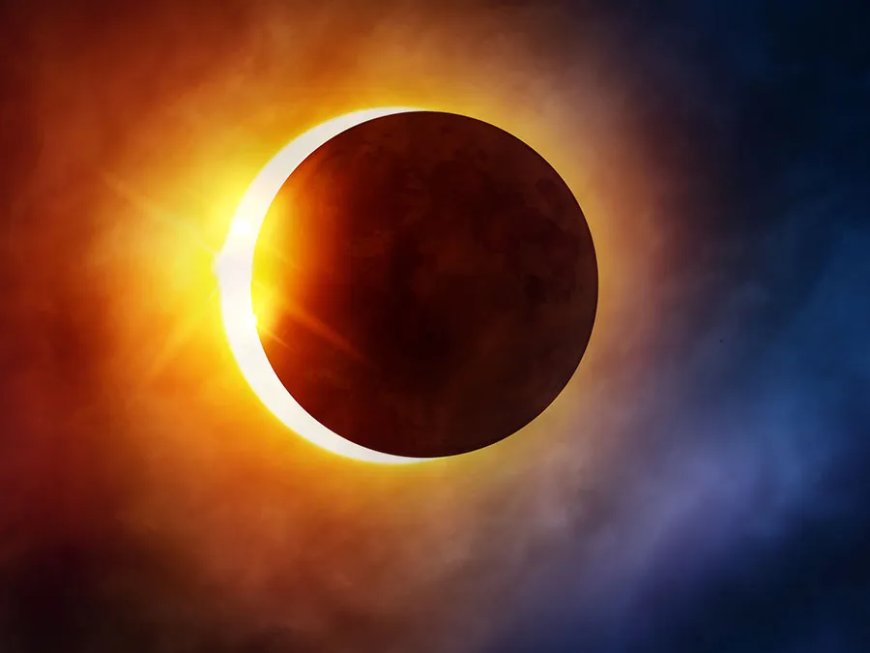Total Solar Eclipse Looming 8th April – What You Should Know
According to NASA, the total solar eclipse on April 8 will commence over the South Pacific Ocean. The first location in North America to witness totality will be Mexico's Pacific Coast, starting around 11:07 a.m. PDT.

On April 8, a total solar eclipse is poised to captivate observers across the region, offering a rare spectacle as the moon casts its shadow upon the Earth
https://twitter.com/accuweather/status/1713963016277107083
What is the total solar eclipse?
A total solar eclipse happens when the Moon completely covers the face of the Sun. Every 18 months or so--somewhere in the world--a total solar eclipse takes place.
The total phase of the eclipse, where the Moon completely covers the Sun, is visible from along a narrow path of totality. Typically, this path across the globe is around 15,000 km (9000 miles) long, but only about 150 km (90 miles) wide.
The report unveiled that 14 states in the US lie along the path of totality, including Texas, Oklahoma, Arkansas, Tennessee, Illinois, Kentucky, Indiana, Missouri, Ohio, Pennsylvania, New York, Vermont, New Hampshire, and Maine. Additionally, residents in southeastern Missouri, western Kentucky, and southern Illinois will witness their second total solar eclipse in seven years, as they were also within the path of totality in 2017.
According to NASA, the total solar eclipse on April 8 will commence over the South Pacific Ocean. The first location in North America to witness totality will be Mexico's Pacific Coast, starting around 11:07 a.m. PDT.

The timing of the event varies depending on your location along the path of totality. Here are the listed times for the beginning of totality in select cities:
Dallas at 1:40 p.m. CDT.
Little Rock at 1:51 p.m. CDT.
Carbondale, Kentucky, at 1:59 p.m. CDT.
Cleveland at 3:13 p.m. EDT.
Buffalo, New York, at 3:18 p.m. EDT.
Caribou, Maine, at 3:32 p.m. EDT.
How to safely watch the eclipse
To safely view the total solar eclipse on April 8, 2024, you will need glasses equipped with solar filters, commonly referred to as eclipse glasses or solar glasses. These specialized glasses are designed to protect your eyes from the harmful effects of direct sunlight during the eclipse.
To safely observe the total solar eclipse on April 8, 2024, wear eclipse glasses with solar filters to protect your eyes from harmful radiation. Remove glasses during totality, but re-attach before partial eclipse. Use eclipse glasses at all times during partial eclipse phases. Follow local safety guidelines and follow recommended procedures to ensure a safe viewing experience.
Observers located outside the path of totality may witness a partial eclipse. Solar eclipses are conventionally named after their darkest phase. If a solar eclipse is total at any point on Earth, it is termed a total solar eclipse.
However, there are exceptions to this rule, such as hybrid solar eclipses or annular-total eclipses. These types of eclipses transition between an annular and total eclipse, or vice versa, along their path.
During a solar eclipse, wildlife and insects may react to the changes in light and temperature. Birds may become silent, and crickets may start chirping as they perceive the event as dusk or nighttime. NASA is conducting a citizen science experiment to study these wildlife reactions during the 2024 eclipse.
Regardless of your location, the 2024 North American eclipse promises to be a remarkable event. Don't miss it, as the next total solar eclipse visible in the United States won't occur until August 2044.
What's Your Reaction?
















































































